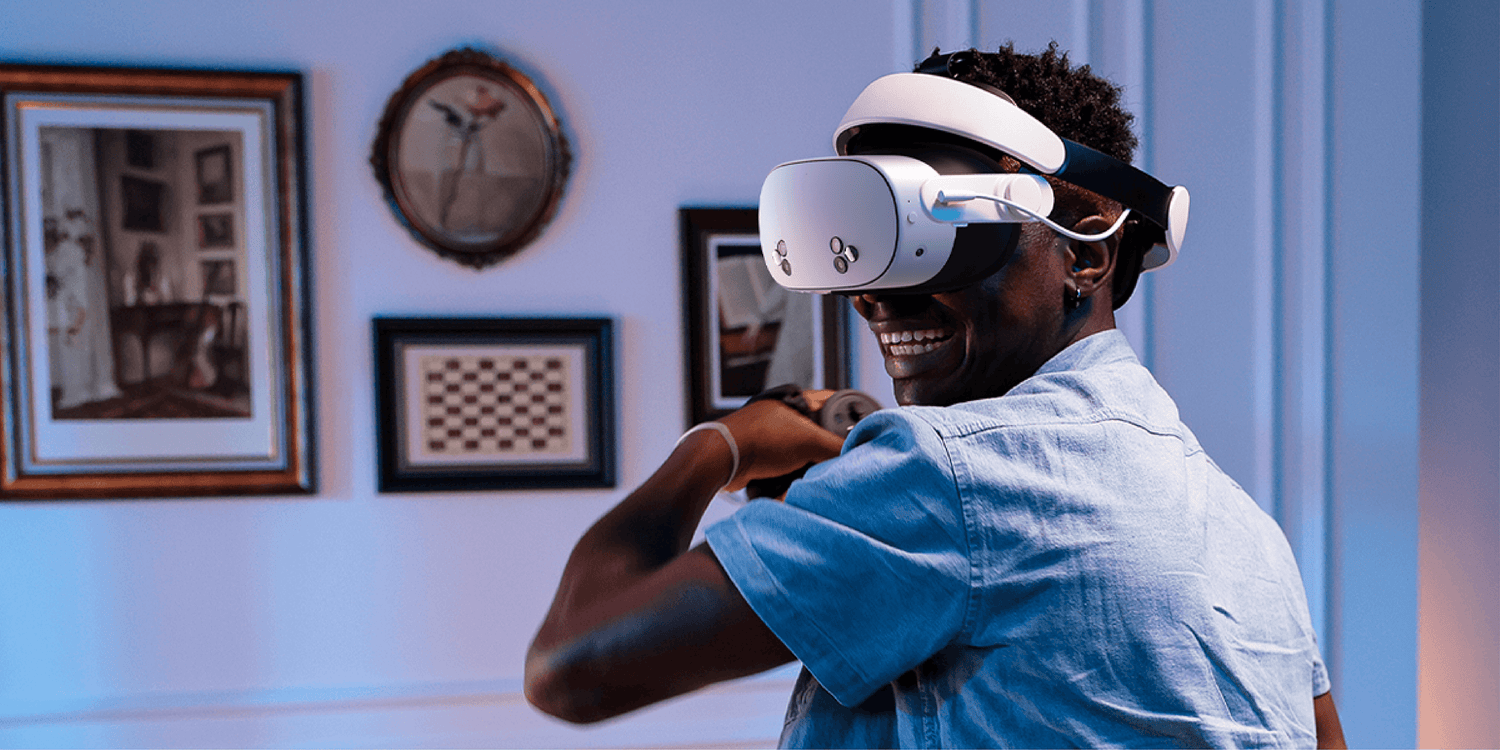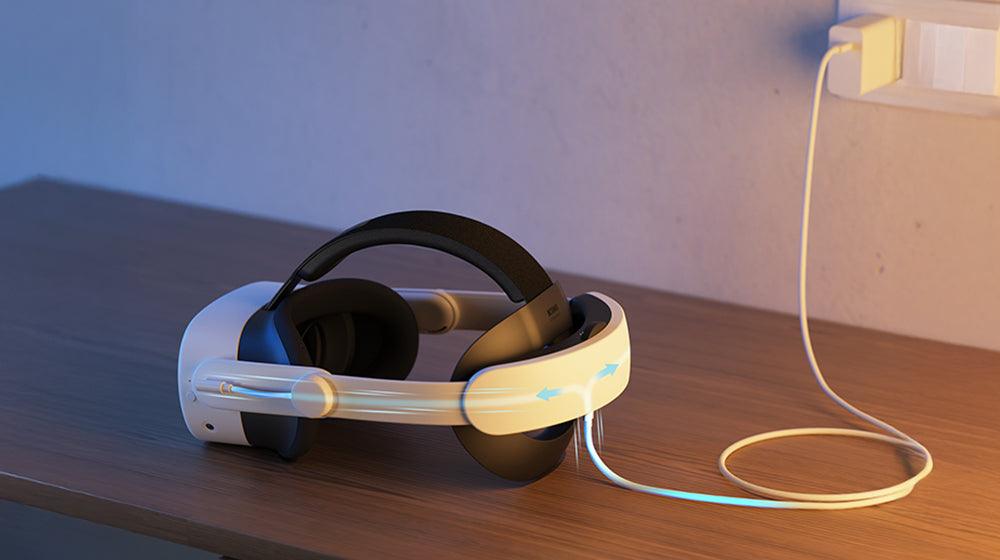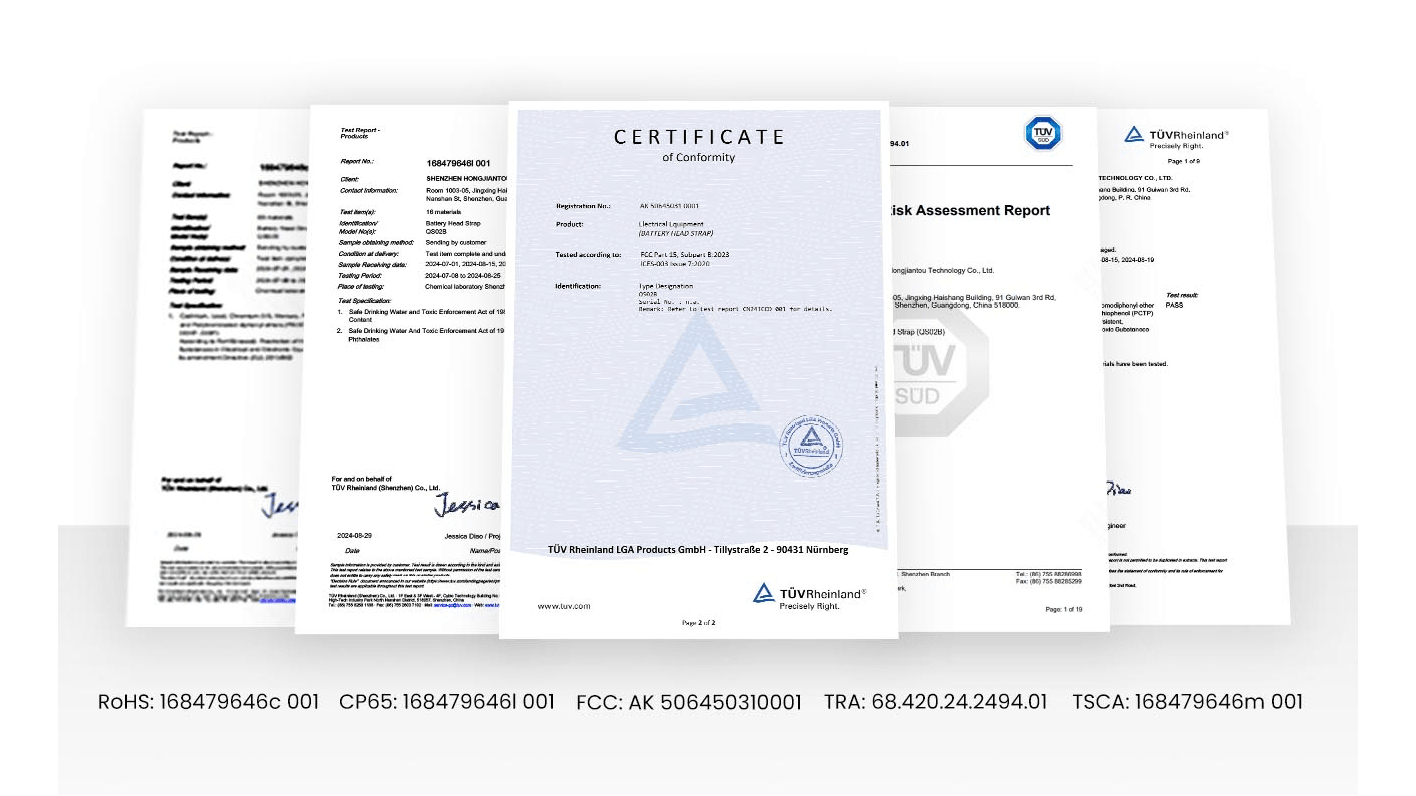In VR accessories market, comfort is often a top priority for users when choosing a head strap. However, cooling is equally essential, especially during extended wear. Many users have experienced the discomfort of heat buildup on their head straps, leading to stuffiness and dampness where the strap touches the forehead and face. This not only affects the fit but can also break immersion, especially in warmer environments or intense sessions. Traditional head straps often use thick foam padding for added comfort, but this design can hinder airflow, leading to poor heat dissipation. Some accessories attempt to counteract this with built-in fans, but these bring their own challenges.
Limitations of Fan-Based Active Cooling
Some VR accessories on the market incorporate fans to enhance cooling. While fans can alleviate some heat, they also introduce noise that disrupts immersion. Additionally, fans increase battery drain, reducing the head strap’s operating time, which can impact the seamless flow of VR gaming. Fan mechanisms can also take up valuable space within the head strap, potentially compromising comfort.
The H4 Boost’s Passive Cooling Solution: Staying Cool Without a Fan
During the development of the H4 Boost, KIWI design opted for a quieter, fan-free approach: passive cooling. This solution achieves optimal cooling through clever structural design, enabling natural airflow to dissipate heat without additional cooling materials or fans.
- Innovative Airflow Design: The H4 Boost features a hollow, ventilated structure that allows air to flow naturally between the head strap and the head. Combined with the head strap’s shape and curvature, heat doesn’t accumulate, so even during extended use, users feel cool and comfortable.
- Benefits of Lightweight Design: Optimized materials and structure keep the H4 Boost exceptionally lightweight. This not only enhances comfort but also allows air to circulate freely within and around the head strap, delivering effective cooling without added power consumption.
- Material Selection Optimization: For the plastic and inner lining, H4 Boost uses breathable, eco-friendly materials that boost airflow while ensuring durability. The design offers long-lasting wear without sacrificing durability, thanks to the combination of sustainable materials and thoughtful structure.
Why Passive Cooling?
The passive cooling design provides excellent heat dissipation while keeping the head strap quiet and power-efficient. Without a fan, the H4 Boost avoids the distraction of mechanical noise, creating a more immersive gaming experience without impacting battery life. For VR, where extended wear and device temperature control are vital to overall experience, the H4 Boost balances efficient cooling, extended battery life, and a quiet experience through its innovative structural design.
User Feedback
User experience tests for the H4 Boost reveal positive feedback. Many users reported that the head strap’s temperature control was exceptional, and they experienced no forehead stuffiness even after long sessions. The fanless design also allowed for a noise-free experience, noticeably enhancing immersion. Heavy VR users, in particular, found the natural cooling design ideal for staying fully immersed in virtual worlds during long sessions.
Conclusion
The H4 Boost’s passive cooling design effectively meets VR users’ cooling needs while avoiding the issues of fan noise and battery drain. Through unique structure and innovative material choices, the H4 Boost delivers a head strap that is comfortable, eco-friendly, and quiet. This design philosophy not only reflects KIWI design’s commitment to user experience but also showcases our innovation in technology development.





コメントを書く
全てのコメントは、掲載前にモデレートされます
このサイトはhCaptchaによって保護されており、hCaptchaプライバシーポリシーおよび利用規約が適用されます。